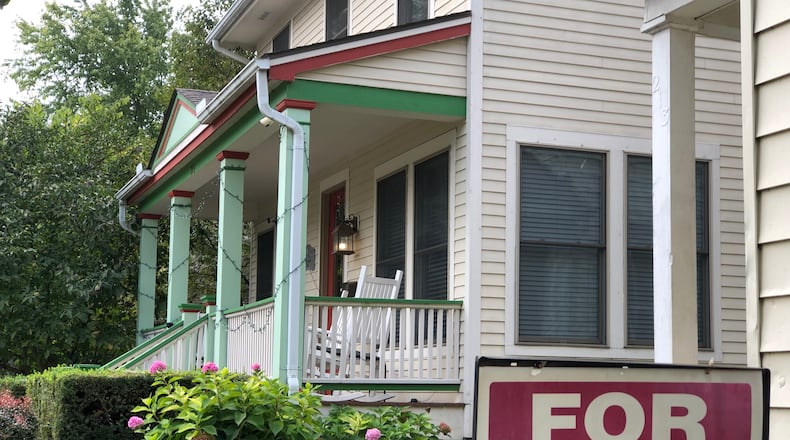In 2021, approximately 180 eviction cases were filed per month in Dayton Municipal Court. Officials from the Dayton, Fairborn, and Xenia courts report they have not seen a spike in eviction filings since the moratorium ended.
But financial hardships continue for many.
“The moratorium is finished, families with children had their tax credit terminated in December, COVID unemployment benefits are gone,” said Xenia city councilman Will Urschel, who is also vice president of the Bridges of Hope nonprofit. “It’s like Jenga. When’s the tower going to fall?”
The CDC moratorium didn’t stop all evictions, as landlords could still kick someone out for being a nuisance. And to benefit, tenants had to attest that they had been directly affected by COVID-19 and had sought rental assistance.
However, by the time an eviction complaint is filed, the hearing is usually faster than the person can get that assistance, said Fairborn Municipal Court Judge Beth Cappelli. Eviction hearings are usually two to three weeks from the time a person is served a notice, whereas getting rental assistance can take months.
“Unless they filed before getting the notice or the landlord is willing to work with them, they usually don’t have the time to get assistance before they are evicted,” she said.
In 2019, 557 eviction cases were filed in Fairborn Municipal Court, compared to 366 in 2020, and 435 in 2021. The vast majority of these filings are resolved without ever going to court. The data may be skewed, however, as people may leave their homes regardless of whether they have somewhere to go before landlords ever take legal action.
In Ohio there is no legal defense for not having paid rent, and landlords are more likely to have legal counsel than tenants. As many as half of those in Fairborn cases don’t even show up to the hearing.
“I don’t know if we will see evictions spike, but we will see homelessness increase,” said Jim McCarthy, CEO of the Miami Valley Fair Housing Center. “The people who are going to be most affected by this are the people who have experienced eviction before. They are the people who most assume they are going to lose if they go to court.”
The advance child tax credit, which ran from July to December, saw some families increase their monthly income by around $250 per month per child.
“The consensus was a lot of families were using that to supplement their income. With the termination of that, in next couple months, families are going to be struggling to meet basic needs,” Urschel said.
Eviction also poses a greater risk of homelessness to families with children rather than single adults, as adults can couch-surf a lot longer than a family of four. Area nonprofits are doubling down on preventing families from being evicted in the first place, though homeless shelters often find out too late in the process to stop it.
“By the time someone shows up at a shelter, people are typically three months out of their eviction. They’ve been evicted, stayed for awhile, stayed with family, and used up their money on a hotel, so it’s way too late to address the root cause,” Urschel said.
Last year, United Way of Greater Dayton expanded its Strong Families program into Greene and Preble counties. The effort works with families to get and maintain affordable and sustainable housing, increase their income, and support their children academically. In Montgomery County, 98% of families stayed sustainably housed through the nonprofit, and 91% increased their income. However, available and affordable housing is becoming harder to find since the 2019 Memorial Day tornadoes.
“Prior to the pandemic, we had a looming, pending situation with housing in general‚” said Tracy Sibbing, United Way’s vice president for community impact. “Our housing stock in Montgomery County is a real issue. Rent prices have skyrocketed, particularly after the tornado.”
Montgomery County has allocated emergency coronavirus funds for rental assistance, allowing people to apply for 12 months of back rent, and three months moving forward, to try to incentivize landlords not to pursue eviction, but renters may still be leaving money on the table, either due to intimidation, confusion about the process, or simple poverty.
“There is documentation, of course, but depending on the individual it can be overwhelming to put together,” said McCarthy. “And there’s this mindset of ‘Am I going to go through all of this and not get the help anyway?’ and pre-pandemic, a lot of times that was the case.”
If an eviction spike is going to happen, it will most likely be in the spring, as the warmer weather means landlords typically turn people from April through September, and area homeless shelters may see a surge.
“If that happens, we do not have the capacity to house these folks in the homeless shelters we have,” McCarthy said. “When you’re focused on survival, you eat the dead thing in front of you. It doesn’t matter if you use utensils. That sounds extreme, but those are the decisions people are making.”
About the Author

